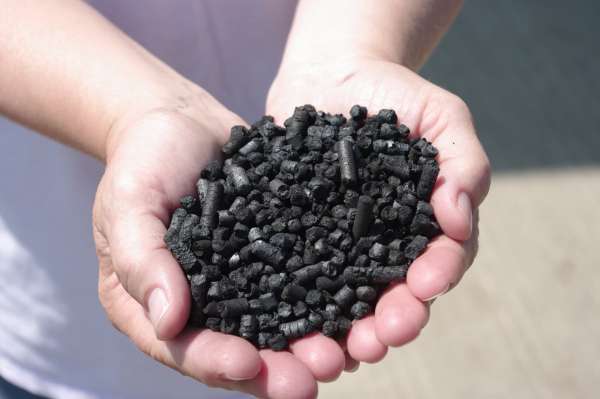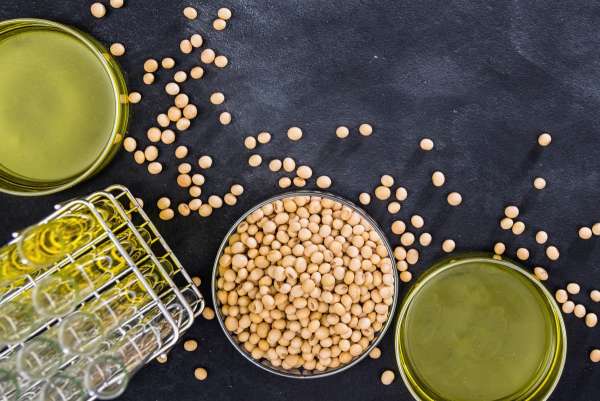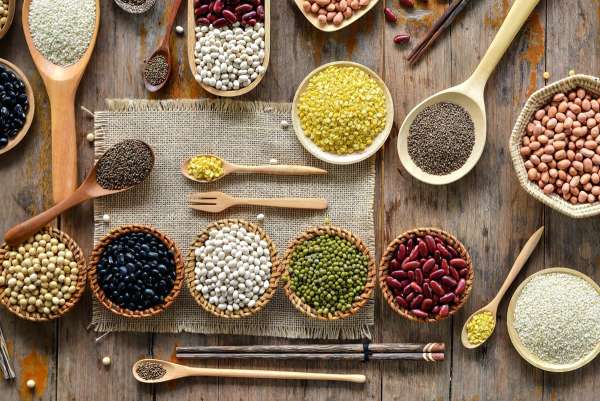Oh soy good! Milk types and food security
Lessons
# Make Soy Milk SLOP #1100
Follow this standard laboratory operating procedure (SLOP) to make soy milk.
Files
# Ice Cream in a Bag SLOP #1101 and #1102
Follow SLOP#1101 to make ice cream from soymilk from a standard recipe. SLOP #1102 asks students to determine the proper equipment to make accurate measurements of ingredients, collect data on temperature and calculate freezing point depression.
Files
# Molality and Freezing Point Depression
Enhance background knowledge of freezing point depression. This powerpoint provides practice problems for calculating freezing point depressions.
Files
# Molarity and pH
Enhance background knowledge of molarity and pH. This powerpoint provides an introduction to solutions and pH calculations.
Files
# Oh Soy Good Data Collection
Use these data collection booklets for students to collect temperature readings and calculate freezing point depression of soymilk for ice cream, and measure germination, plant growth, soil moisture, soil pH and other nutrient testing when growing soybeans.
Files
# Cultural Awareness Research Project
Research agricultural practices within various cultures. Student groups select a country of interest, conduct required research from credible sources and create a presentation.
Files
Teacher background
A complete food source is one that contains the nine essential amino acids and two fatty acids necessary to maintain healthy human life. The essential amino acids include: histidine, isoleucine, leucine, lysine, methionine, phenylalanine, threonine, tryptophan and valine. Arginine is essential for children but not adults. Food sources with these nine essential amino acids help ensure healthy development in children and lead to a higher standard of health for adults. There are two essential fatty acids: linolenic and linoleic acid. The human body uses these to build specialized fats called omega-3 and omega-6 fatty acids. Fats are vital in maintaining optimal organ and immune system function.
What makes these substances essential is that the human body cannot synthesize them from other compounds or nonessential amino and fatty acids. Animal proteins have traditionally been the sources of these substances, but many plants, i.e. fruits, nuts, seeds, have been found to contain these essential molecules, including soybeans.
The World Food Summit of 1996 defined food security as existing “when all people at all times have access to sufficient, safe, nutritious food to maintain a healthy and active life”.
Food security is determined by:
- Availability: sufficient quantities of food are available on a consistent basis.
- Access: there are sufficient resources to obtain appropriate foods for a nutritious diet.
- Use: appropriate use including preparation and handling, as well as adequate water and sanitation.
Food security is a complex issue, linked to health, economic development, environment, and trade in countries where there is food scarcity. There is a great deal of debate around food security. Think about these statements:
- There is enough food in the world to feed everyone adequately; the problem is distribution.
- Current levels of production cannot meet future food needs due to population growth.
- National food security is a priority.
- National food security is no longer necessary because of global trade.
- Globalization may lead to the persistence of food insecurity and poverty in rural communities.
Which ones do you agree with?
U.S. soybean farmers grow versatile and renewable soybeans to help meet food, feed and fuel demand globally. Soybeans are one of many choices we have to meet a range of needs for protein, as well as fats and oils. Nearly half of the U.S. soybean crop stays in the United States, but the rest heads to customers around the globe. More than half of Ohio’s total soybean production is exported to buyers in markets such as Taiwan, China, and Japan. However, only 3% of soybean meal is actually used in food products, such as protein alternatives and soymilk.
How can we make a case for providing complete food sources, to help to ensure food security in countries where food scarcity is an issue?
Next gen science standards
Science and engineering practices
- Asking questions (for science) and defining problems (for engineering)
- Analyzing and interpreting data
- Obtaining, evaluating, and communicating information
Crosscutting concepts
- Scale, proportion, and quantity
Disciplinary core ideas/content
- PS4C Information technologies and instrumentation
- ETS2 Links among Engineering, technology, science and society








Share this